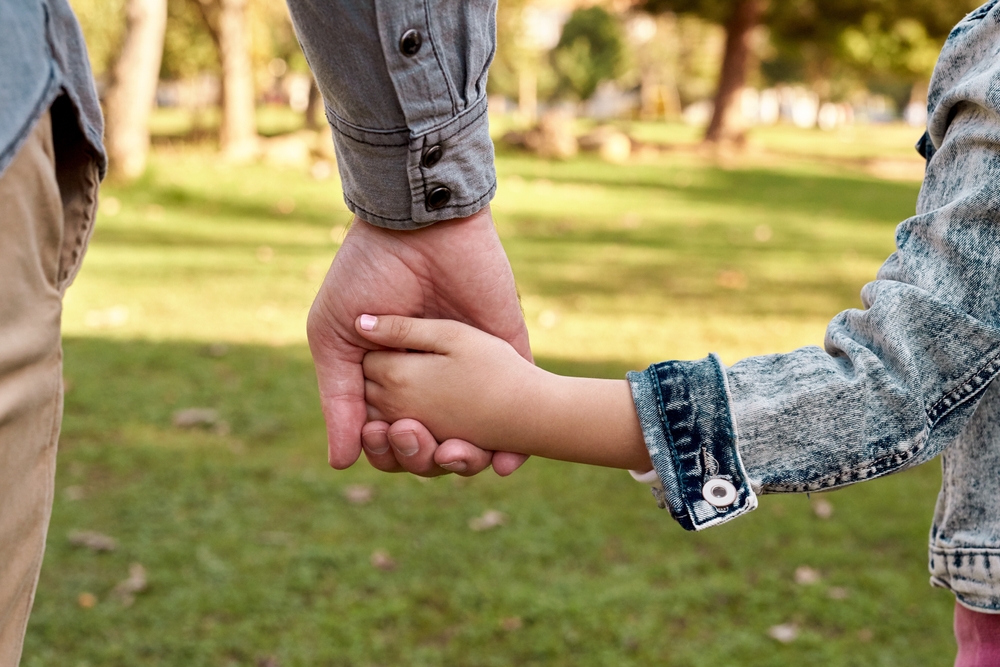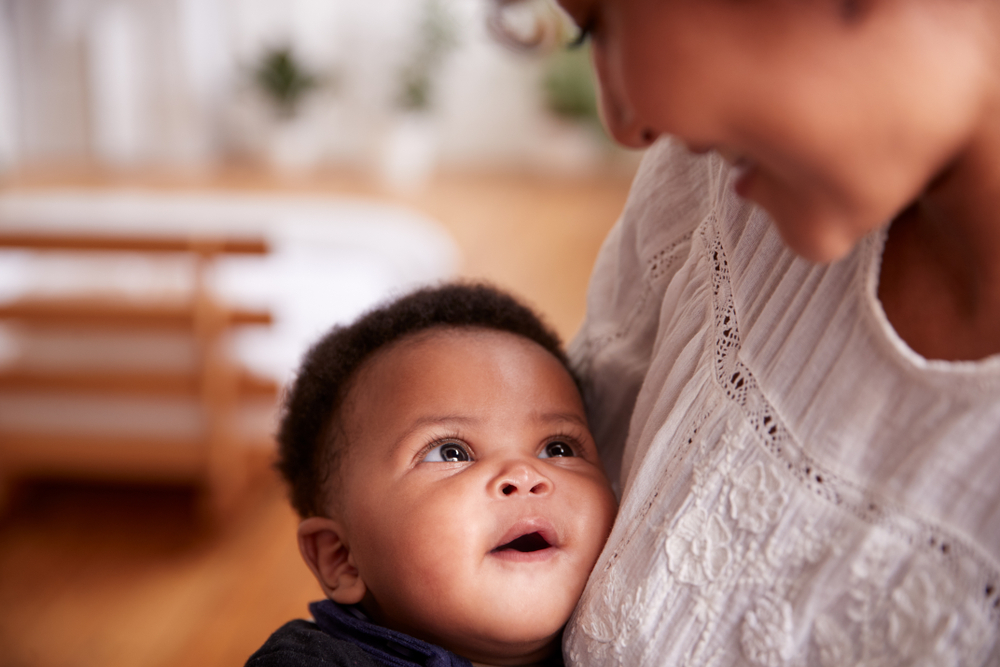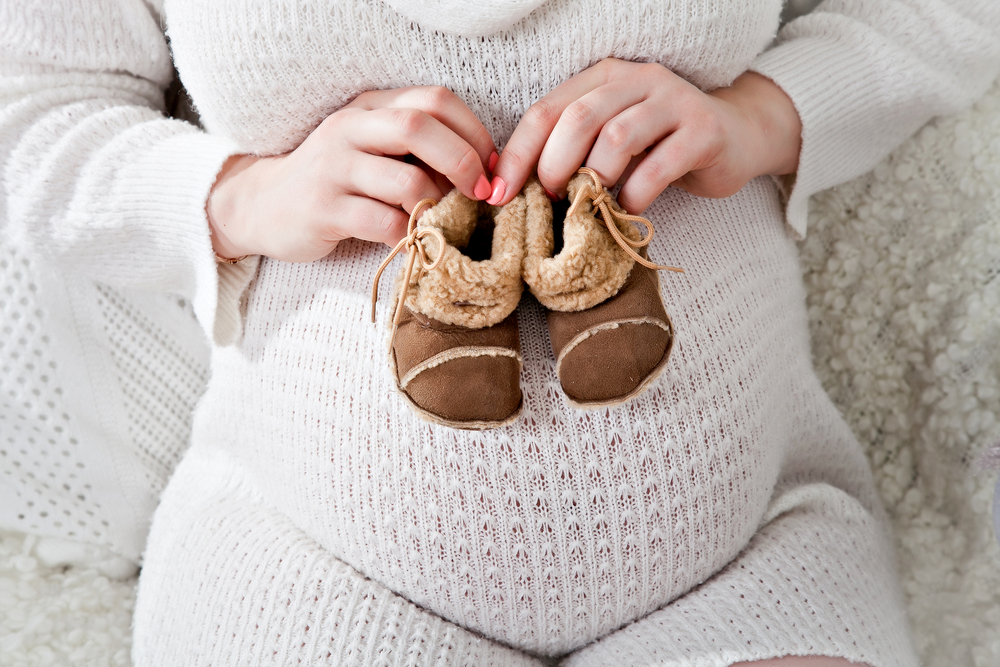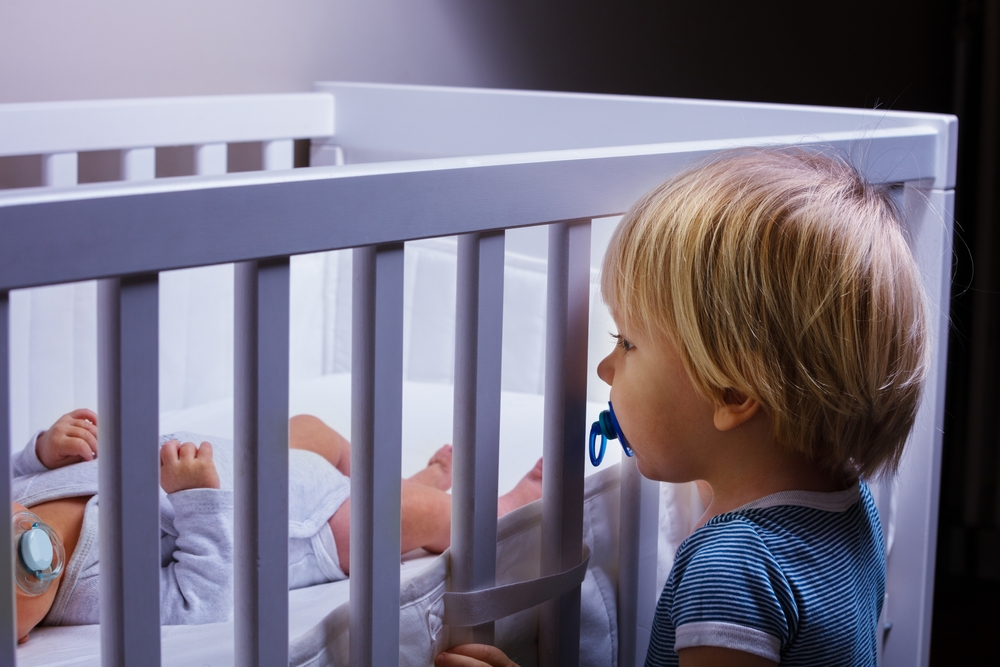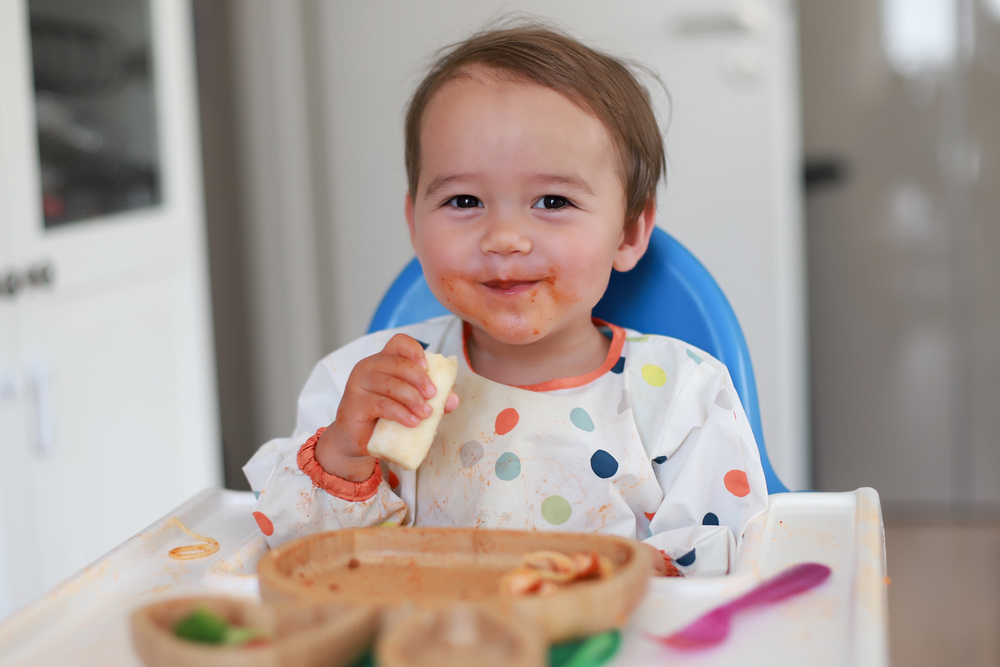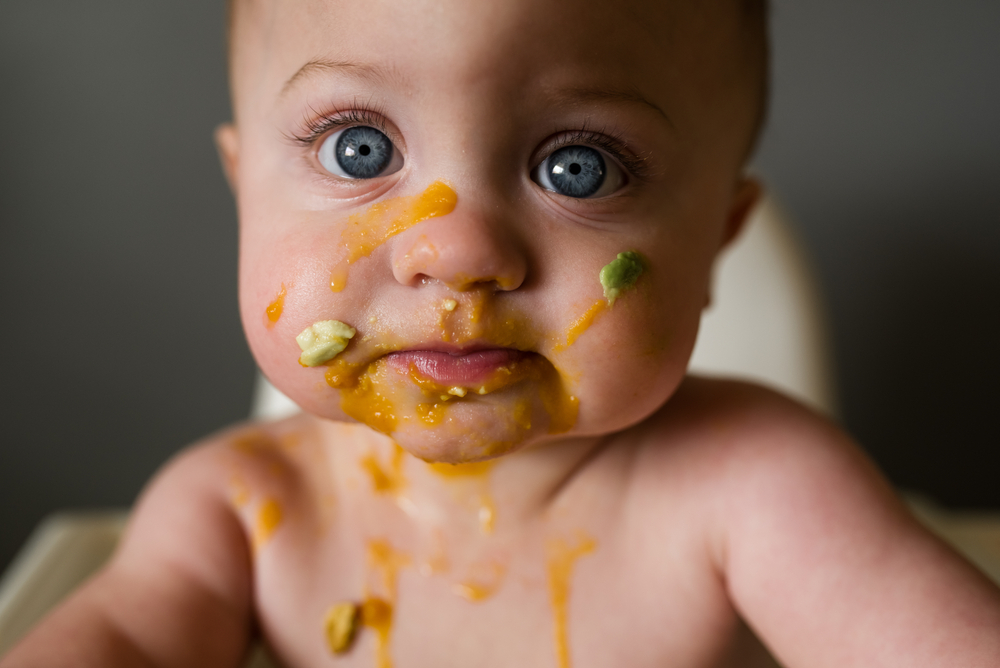Notice your little one doing anything new? Months 4 to 6 of your baby’s life will include lots of big strides in development – yay! Now that the newborn days are behind you, you can look forward to your baby becoming more aware and mobile. Whether it’s smiling from ear to ear when they see you, rolling over or making a fuss when mummy or daddy leaves, each day of months 4 to 6 will bring exciting new adventures. And each one, no matter how big or small, will help your cutie to learn more about the world around them.
With the first three months done and dusted, let’s explore months four to six of your little one’s life in a little more depth.

How Much Will My Baby Grow Between 4 to 6 Months?
Whilst all little babes will grow at a different pace, the following is a rough guideline for boys and girls aged 4 to 6 months:
- Weight – around about 1 to 1.25 pounds each month (by 4 to 5 months birthweight will have doubled).
- Height – around about 0.5 to 1 inch each month.
- Head size – around about 0.5 inches each month.
Your 4-month-old babe will remain on a liquid-only (or mostly) diet. However, some mummies and daddies start to introduce yummy solids once their little one hits 4 months old. If this is something you’re also considering, you must check with your doctor first. Experts advise that most little ones wait until they’re 6 months old to begin munching away on regular food. And in addition to age, other signs to look out for that shows your cutie is ready for solid foods include:
- Are they holding their head in a steady, upright position?
- Are they able to sit up without support?
- Are they mouthing their hands or toys?
- Are they showing an interest in food by leaning closer and opening their mouth?
If you speak to your doctor, and they give the go-ahead with spooning up solids from month 4, remember that your little one doesn’t need more than a tablespoon of food. One spoonful of baby cereal, fruit or veggies once or twice a day will be enough to get their tastebuds tingling. After all, these solid foods are only for practice, not for nutrition. Your babe’s growth will still be fuelled by the trusty breast milk or formula.
Remember – if your little one doesn’t fall into the average weight range for babes aged 4 to 6 months, and if their doctor isn’t worried, you shouldn’t be either! Every cutie’s growth pattern is different and that’s ok! Every baby is one-of-a-kind.
Feeding Cues: Months 4 to 6
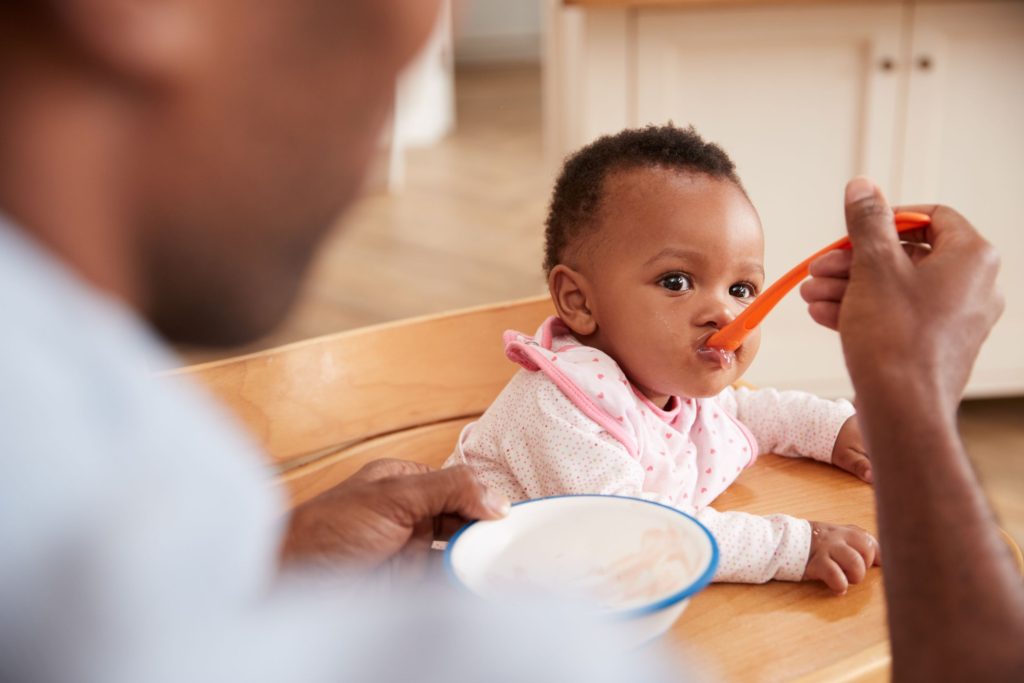
Between 4 to 5 months, you’ll start to learn the signs that show that your bub is hungry or full. You’ll know your little one is ready for fuel when they:
- Put their hand to their mouth
- Turn their head towards breast/bottle
- Puckers, smacks or licks lips
- Clenches hands
And if they’re full, your baby may do the following:
- Close their mouth
- Turn their head away from breast/bottle
- Relax their hands
When your cutie hits that all-important 6-month milestone, look out for these signs that they’re hungry:
- Reaches for/points towards food
- Opens their mouth when offered a spoon/food
- Gets excited when they see food
- Uses hand movements/makes sounds to let you know they’re still hungry.
And once your babe’s tummy is satisfied, watch out for the following signs that they’re full:
- Push food away
- Close their mouth when food is offered to them
- Turn their head away from food offered to them
- Make hand movements/sounds to let you know they’re full.
4 Month Old Baby Development

Let’s start with the 4 month baby development of your bubba:
- Colour savvy
Fun fact – once your cutie hits 4 months old, they’ll be able to notice differences in shades of colour – particularly red and green. Plus, they may even start to favour certain ones. Maybe you’ll get to witness the excitement on their face when they see pink. Or perhaps greens will get their hands clapping for joy! Whatever happens, being able to distinguish between different shades of colours is a huge milestone.
- Teething
Heads up to the tooth fairy – teeth are on their way soon! From about 4 months, you may see your little one’s first signs of teething. Prepare for dribbling, sore and red gums, and red cheeks – so have the teething toys at the ready. Although, you probably won’t see that very special first tooth appear for another month or so.
- Elevated attention span
Your cherub will now start to focus on things more and more, paying more attention to things that they may see on TV, mirrors, toys and different people. Encourage your baby on this exciting journey by continuing to vary what they see and play with, as well as giving them plenty of face-to-face attention when talking to them. Lots of cooing and eye contact is a must with your little beauty!
- Movement and head control
During tummy time your cutie will now probably be able to rest on their forearms for a couple of minutes. This is a fantastic strengthening exercise to prepare their little muscles for all that crawling about you’ve got to look forward to later down the line! Around about this time, your babe will also surprise themselves by rolling over from their belly and onto their back for the first time. And when this happens, don’t forget to shower your little high-flyer with lots of praise! Your baby’s teeny tiny legs are growing stronger each day, and if you hold them in a standing position, they’ll be able to push down and support their own body weight temporarily.
- Laughs all around
Many babes will laugh out loud for the first time when they’re around about 3 or 4 months old. However, other little ones may take a little longer to share their first giggle – and that’s ok! Your cutie’s first chuckle may come about from something as simple as seeing their favourite toy, pet or person (that would be you!). Whilst these early sweet giggles are heart-warming to hear, they’re also rewarding for your bub, as they’ll love hearing their own voice and seeing how mummy reacts to the sounds they make.
Once your cutie has discovered how to laugh, they may laugh just for the sake of it. After all, giggling away feels good, and it’s a fun new sound to make for little ones. Not to mention, with each coo and goo, your bub is learning and practicing how to move their mouth and tongue to create different sound effects – what a milestone! Make sure to pull lots of funny faces, sing songs and blow raspberries on your babe’s tummy, if you want to encourage that cute little giggle.
- Vision
By 4 months old, your little bambino will also be able to track and follow quicker movements with their eyes, perceive depth and even grab at moving objects. However, don’t forget that their hand-eye coordination may not allow them to actually hold onto the target of their attention yet.
4 month old sleep schedule
At 4 months old, you may confront a challenging experience with your little one, and that’s all due to something called sleep regression. It happens throughout various stages of infancy, with the first one happening at around about 4 months. You may find that your bub has settled into a predictable pattern of sleep but then out of nowhere signs of sleep regression may come about. These include:
- Waking up more often at night
- Refusing sleep or naps
- Increased irritability
Most of the time, sleep regressions come about due to a “growth spurt” in your little one’s brain and body. Don’t worry though! They’re temporary, and to deal with a sleep regression, all it takes is to continue being consistent with your baby’s routine and sleeping patterns.
We understand it may be difficult to stick to your bub’s routine when they’re going through a sleep regression. However, it’s best to keep on laying them down at their usual sleep and nap times, and continue with sleep routines you’ve mastered, whether it’s bedtime bath fun or a story. And don’t forget those all-important naps! The usual nap schedules at this age should include two to three naps (one in the morning and one in the afternoon) lasting around about 1 hour to 1.5 hours – though this can vary.
One very exciting 4 month baby development that may impact your little one’s slumber is their newfound ability to roll over from front to back. When your child is capable of rolling about, you’ll want to reconsider using a swaddle, as the blanket could end up untucked or unrolled – we want to keep your chicken as safe as possible! Go for a sleep sack instead to keep them wrapped up in a safe but snuggly way.
Top tip – at this tender age, make sure to lay your babe down whilst they’re awake. This is because they’ll learn more about cause-and-effect at this age, and realise that by crying, mummy and daddy will come to the rescue. Keep in mind that you may have to test the waters more this month by teaching your little one to self-soothe or fall asleep on their own.
5 Month Old Baby Development

Most doctors and experts measure a baby’s milestones at 4 months old and 6 months old. And the 5 month baby development of your little cutie’s life is very much a period of transition for both you and them. Your bub will hit lots of different physical, developmental and cognitive milestones during month five. So, what can you expect?
- Hands on
At this age, your cherub will most likely be able to lift and hold an object. However, they won’t be able to unclasp and let go of it at choice yet. They may also be able to use their thumbs separately from their teeny tiny fingers, so that they can hold objects better in a ‘claw-like’ way. Be prepared for lots of toy shaking, and the noises that may follow, for example with a rattle. And in month five, they’ll also probably be able to hold objects with both their hands, as well as suck their feet when you change their nappy.
Now that your little clever clog has perfected their hand-to-mouth coordination, don’t be surprised if they’re putting everything in their mouth. They’ll suck, chew to taste and explore away as their mouth is more sensitive than their cute little fingers. Just make sure to check all toys for buttons and loose parts, as you don’t want your baby to bite them off.
- Less cooing
You may have spotted that your little cutie is starting to coo less often as they experiment with making more complex sounds. For example, you’ll get used to all the ‘bubbly’ noises they begin making by putting their tongue against their lips. And at this age, you’ll also see a lot of ‘raspberry blowing’ as your bub vibrates their lips together. All of this means to prepare for cuteness overload!
- Brain power
Your cherub will continue to learn about cause and effect at this age. For example, they’ll start to figure out that particular actions, like dropping food off their highchair or kicking their teeny legs, can cause a reaction. Better yet, they may even enjoy those reactions so much so that they’ll repeat them over and over again!
In month five of your baby’s life, you can also look forward to your baby smiling at people, as well as copying facial expressions like smiling or frowning. At this age, little ones will often babble and try to copy vocal sounds too, like mummy’s cooing.
5 month old sleep schedule
When your bub hits the 5-month milestone, on average they’ll snooze for about 11.5 to 14 hours each day. They should also have two or three naps during the day, and each nap should last anywhere from 30 minutes to two hours.
Some little ones are more natural “catnappers” whilst others may require a longer stretch. The good news is that by 5 to 6 months, many babes will start sleeping through the night too, meaning they’ll stay asleep for 8 to 9 hours. Mummies and daddies, now you can breathe and relax!
As your bambino begins to sleep longer during the night and also rolls over, you may be worried about their safety at night. Just make sure to put your bub to sleep on their back and not on their stomachs. And don’t forget – never leave your little one unsupervised when it comes to tummy time.
6 Month Old Baby Development

When your baby hits their 6-month milestone, you’ll probably be wondering how it’s already been half a year since your bundle of joy entered the world. And by this age, their personality will be blossoming and shining through too! A lot will have happened over the last few months and this swift growth and development has led up to some monumental milestones this month. In fact, many mummies and daddies are often overjoyed when their little ones reach 6 months old, as it means many exciting changes are on the way.
From starting solid foods to becoming more mobile, let’s explore what month six has in store for your cutie:
- Familiar faces
Your sweetheart is drawn to your face from the moment they’re born (and you to theirs!). Now halfway through their first year, your baby will know familiar faces and understand if someone is a stranger. Flip through family photos, play peekaboo and have fun with mirrors! These will all hone your bub’s social and communication skills.
- Expert in pulling strings
By now, your little clever clog will have become an expert in pulling mummy and daddy’s strings! They’ll hold their arms out for you to pick them up, snuggle up to you when they want to stay with you and arch their back when they want to be put down. And due to them having sufficient long-term memory of a couple of days and all the way up to 10 days, they can remember and foresee pleasant experiences. For example, when getting ready for bath time fun, they may kick their little legs, squeal and shake their head excitedly.
- Sight, hearing and awareness
The 6 month milestone brings with it an understanding of ‘object permanence’, which means that your bub will look for an object they’ve dropped or dropped out of sight. This will make games of peekaboo even more amusing now that your babe will giggle with anticipation of mummy or daddy’s face reappearing from behind their hands!
Your cutie’s sight will have improved a lot at this age, to the point where they can enjoy toys with more complex features like doors, pushbuttons, winding handles and turning dials. Not to mention the fact that they’re also getting really good at judging speed and direction, as they’ll be able to grab a moving object at the right moment now.
- Budding talker
Some of the bigger milestones that little ones hit at this age will be related to their language skills. Your bub should respond to sounds, string vowels together and they may even begin to say constant sounds. As well as this, they’ll be able to make noises to show their delight and displeasure, which is a good opportunity for you to pay attention to what your babe likes and dislikes!
Most little ones will understand and respond to their own names when they’re around about 5 to 6 months old, and they’ll even begin to turn to the direction of someone talking. Your cutie will also understand simple words used in day-to-day life, for example “cup,” “book” and “bottle.” If your baby isn’t quite there yet with responding to their name – don’t worry! To help your child understand words, we recommend talking, reading and singing to them from the very beginning. Even reading the newspaper out loud to your newborn will help your budding bookworm to separate sounds into words and sentences.
- Foodie
Just as you’ve got the hang of breastfeeding or mastered the bottle routine, your little one hits the 6-month mark and now they’re wanting to get their tastebuds tingling! One of the most exciting milestones to look forward to once your baby turns 6 months old is welcoming solid foods into their life. If they’re showing signs of being ready for solid foods, for example sitting without support, opening their mouth for food and reaching for mummy and daddy’s food – it’s time to introduce tasty recipes other than milk. For a helping hand to wean your little one successfully, we’ve got all the tips and tricks to turn you into a weaning expert.
6 month old sleep schedule
Once your cutie’s 6-month-birthday comes around, they’re likely to be establishing their sleep at night much more consistently than they did in the earlier months. You’ll have more shuteye to look forward to as they’ll start sleeping better at night, usually sleeping for longer stretches. During this time, your bub may even go down from three naps to two naps a day. Overall, they should be snoozing for about 14 hours, and the majority of this will include about 10 hours of sleep at night and 4 hours during the day – happy snoozing!
Keep in mind that little babes at this age may also start waking up at night, whether it’s due to the teething or going through separation anxiety. At other times though, they may wake up because they’re learning a new skill and want to practice it, or it may be because their little tums need feeding. At this age, it’s ok to give your cherub water. So, if they’re waking up at night to feed, we recommend giving them a little water in a sippy cup as opposed to nursing or giving them a bottle. This will gradually stop them from waking up to feed in the middle of the night if all they’re getting is water – tricks of the mummy trade!
From month four to half a year of your little one blessing your life, your child will go through huge developmental milestones that are worth shouting about. Though, just like the first few months of them being in the world, these next few months will also fly by – so cherish every single moment. From rolling over from their tummy and onto their back for the first time to responding to their own name, the whole family are in for a treat! And best of all, your baby’s half birthday will bring well-deserved shuteye for mummy and daddy, so give yourself a pat on the back because you made it out of the sleepless nights. Here’s to the next half of your little one’s life!


